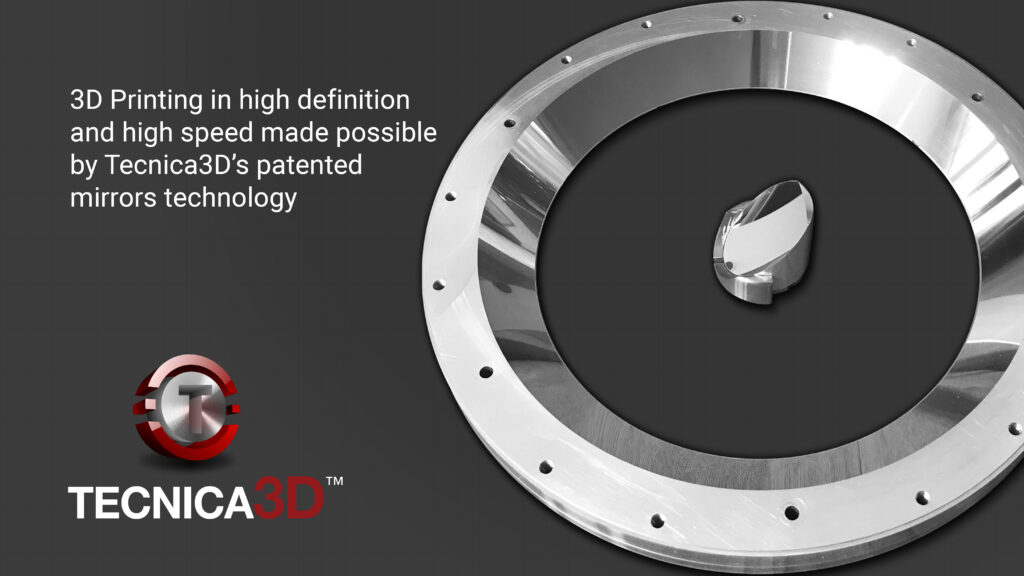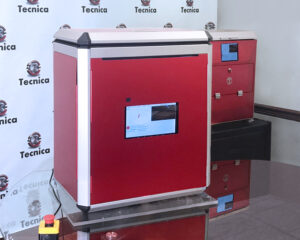
Selective Laser Sintering (SLS) is an additive manufacturing process in which a powdered material is heated below its melting point and a laser is used to sinter the surface. When a material is sintered, small particles are bound to one another in the same way that ice cubes bind together at room temperature without undergoing a phase change. After each layer is sintered, a new layer of powder is dispersed across the print bed and the laser moves on to the next layer. Layer by layer you arrive at a complete 3D print. Although the SLS process can be used to print virtually any material in three-dimensions the application of this technology for metal production has taken on a whole new life. Direct Metal Laser Sintering (DMLS) is a branch of SLS printing that focuses on the production of high strength, complex metal parts.
For many years, CNC machining has been the industry standard for the production of high strength components with custom geometries. However, due to the nature of subtractive manufacturing, CNC machines have several limits on what materials and shapes they can process. For example, complex geometries like cavities, undercuts, and mesh-like structures cannot be machined in traditional CNC machining. Furthermore, CNC machines can’t process brittle materials or soft polymers such as certain ceramics and rubbers. Since the SLS process sinters any powdered material together layer by layer, many complex features can now be produced out of virtually any material.
Although SLS printing has several functional advantages over CNC machining, the cost of an SLS printer is too high to make it available to small and mid-size companies. But that’s all about to change. Due to recent innovations made by our folks at Tecnica, we have been able to increase our print speed to roughly 200 times that of our competitors while drastically cutting the cost. Tecnica is introducing two lines of printers: Optima and CASA printers. While the Optima DMLS printer is geared towards printing industrial-quality metal parts, the CASA is a tabletop SLS printer geared more towards smaller metal and non-metal printing. Both the Optima and the CASA operate using the patented Titan print-head SLS technology. The Optima prints at a resolution of less than 0.07 mm over a print volume of 400 x 300 x 280 mm, making it by far the best printer in its class.
By incorporating on the fly hardware and software adjustments for the laser beam and bed positions, Tecnica has vastly improved the process by which the laser is controlled. This patented technology compensates for equipment deviations and takes into account environmental changes such as temperature, pressure, humidity, and more.
About Tecnica’s patented printhead:
Here at Tecnica, we have developed a high-speed SLS printhead that operates on a fundamentally different optical system than our competitors. By creating an alternative to traditional optical systems that still use Galvanometers, we have successfully bypassed the distortion issues while vastly improving the resolution and print speed. The patented technology improves precision and print speed by using a constant high-speed beam movement such that the laser hits the print bed with constant intensity. This draws a stark contrast with legacy systems in which the speed and energy delivered to the sintered material are not constant, thereby creating a gradient in resolution as well as strength.
| CASA | CASA PRO | OPTIMA | |
| Print Volume Inch [mm] | 3.6 x 3.6 x 5.9 [92 x 92 x 150] | 3.6 x 3.6 x 5.9 [92 x 92 x 150] | 15.7 x 11.8 x 15.7 [400 x 300 x 400] |
| Dimensions WxDxH Inch [mm] | 23.6 x 14 x 23.6 [600 x 356 x 600] | 23.6 x 14 x 23.6 [600 x 356 x 600] | 31.5 x 23.6 x 59 [800 x 600 x 1500] |
| Build material | Nylon RWT – Rigid White Wax RBG – Rigid Gray And More | Nylon RWT – Rigid White Wax RBG – Rigid Gray And More | Stainless steel AL, Cobalt chromium Titanium Ti6Al4V And more |
| Resolution [mm] | 0.2 | 0.1 | 0.1 |
| Laser Power (W) | 25 | 25 | 100/250 |
| Touchscreen display Inch [mm] | 10.6 [269] | 10.6 [269] | 23 [584] |
| Software | Easy build job set-up; Temperature reporting on screen; Real time 2D layout and camera monitored; Rotating and scale tools of 3D model | Easy build job set-up; Temperature reporting on screen; Real time 2D layout and camera monitored; Rotating and scale tools of 3D model | Easy build job set-up; Temperature reporting on screen; Real time 2D layout and camera monitored; Rotating and scale tools of 3D mode |
| Input Data format | STL, CTL, OBJ, PLY, ZPR, ZBD, AMF, WRL, 3DS, FBX | STL, CTL, OBJ, PLY, ZPR, ZBD, AMF, WRL, 3DS, FBX | STL, CTL, OBJ, PLY, ZPR, ZBD, AMF, WRL, 3DS, FBX |
| Print-head Patented technology Utilization | Y | Y | Y |
| Price | $ | $$ | $$$ |
175 E SHORE RD.GREAT NECK, NY 11023 800-367-3414.
Specifications for Optima:
- Feeding cartridge is used to handle multiple materials.
- Prints material as Aluminum, Fe, Fe-0.8C, Fe-4Cu, Fe–0.8C–4Cu–0.4P 316L, M2 (tungsten–molybdenum), M35 ( tungsten–molybdenum-cobalt), Titanium, Nylon and more.
- The optima is using a high powered laser controlled by patented process surpassing printing speed by more than 4X of other 3D printers in the market.
- Saves print material by providing an option to chose your print bed ( 75x75x200 mm or 400x300x280 mm)
- By using a three case design and a removable print bed case, recycling of powder and retrieving of the printed models makes it easy and quick.
- The optima printer monitors oxygen, argon, powder, temperature and pressure at all times.
The CASA Desktop printer print volume is 92x92x150 mm and prints non-metal material. Both the Optima and CASA printer use the Titan Print-head.
The illustration and specifications above are part of our product definition.Tecnica reserves the right to change the design and specification at any time.
Thank you
Tecnica, Inc. Team

